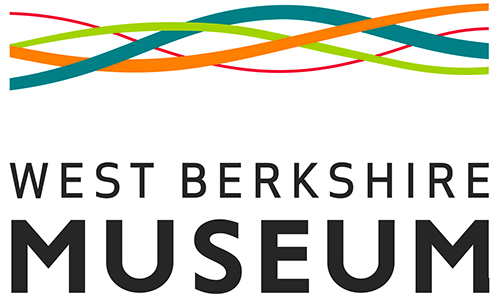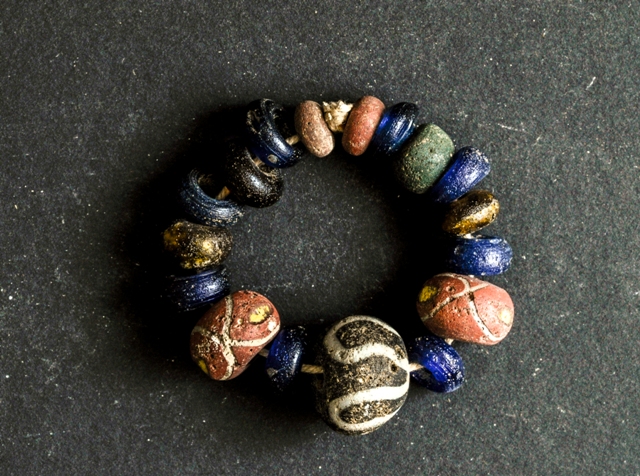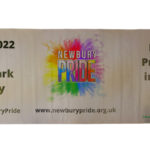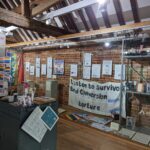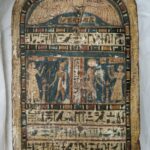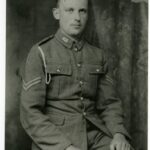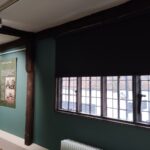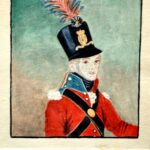An overview of the Museum collections and the people that were involved in shaping its development.
Nineteenth Century
An early catalogue of the collections of the Newbury Literary and Scientific Institution was described by Peake as a ‘model of its kind’. Unfortunately this has now been lost. Very little of the collection which came into the Museum in 1904 can be identified as being from the earlier museum except for some archaeology and a collection of watercolours. Photographs of the old museum in the mid-19th century show mounted specimens of birds and animals but these cannot now be identified in the existing collections.
Harold Peake (Curator 1867-1946)
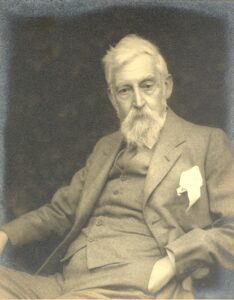 The central role of Harold Peake in developing the collections should not be underestimated. Harold Peake lived most of his life in Boxford near Newbury. He was a well-known, and very knowledgeable, archaeologist and social anthropologist. He is perhaps best remembered for a series of books, in collaboration with Professor H.J. Fleure, entitled The Corridors of Time (10 volumes published mainly between 1927 and 1936). This work attempted to link interpretation of archaeological data in terms of human evolution. Peake also wrote The English Village (1922), a study of social evolution, and the Bronze Age and Celtic World (Gregynog Lectures 1922). He served on the Royal Anthropological Institute (President 1926-8), the British Association and the Society of Antiquaries. One of his other most lasting contributions was The Archaeology of Berkshire (1931), a book still used today owing to its comprehensive gazetteer. He also compiled a vast inventory of British prehistoric bronze implements.
The central role of Harold Peake in developing the collections should not be underestimated. Harold Peake lived most of his life in Boxford near Newbury. He was a well-known, and very knowledgeable, archaeologist and social anthropologist. He is perhaps best remembered for a series of books, in collaboration with Professor H.J. Fleure, entitled The Corridors of Time (10 volumes published mainly between 1927 and 1936). This work attempted to link interpretation of archaeological data in terms of human evolution. Peake also wrote The English Village (1922), a study of social evolution, and the Bronze Age and Celtic World (Gregynog Lectures 1922). He served on the Royal Anthropological Institute (President 1926-8), the British Association and the Society of Antiquaries. One of his other most lasting contributions was The Archaeology of Berkshire (1931), a book still used today owing to its comprehensive gazetteer. He also compiled a vast inventory of British prehistoric bronze implements.
At Newbury Peake had the opportunity to reflect his philosophy and research ideas in the collections and displays. In 1914 he published, A Brief Description of the History of Civilisations of the Old World from BC 2400 to the Present Day, prepared for the Borough of Newbury Museum’. This was a timeline based on ideas pioneered at the Haselmere Educational Museum. Peake then acquired, by purchase, donation, and exchange or field collection, material to illustrate the history of civilisation. The Museum thus became the home to a large collection of archaeology from around the world, and also a comparative historic world culture collection.
Peake’s aim in developing these collections was strictly educational and the arrangement was intended to extend the usual knowledge of history backwards. Peake did not neglect local collecting; indeed it was his joint aim for the Museum. The new upper gallery in the 1934 extension was to hold examples ‘of every fossil and living species ….in the Newbury district’. As noted previously the Field Club were active in archaeological research as well as in natural science fieldwork so these areas were well covered during this period.
The collections acquired by Peake, particularly the world civilisation and culture collections, remain important to the Museum. They fell out of favour later but are still extremely significant. They do not fall within the current collecting area or collecting policy but they are of interest in their own right as collections and demonstrate the significance of collecting far beyond the regional context.
Herbert Henery Coghlan (Curator 1946-1978)
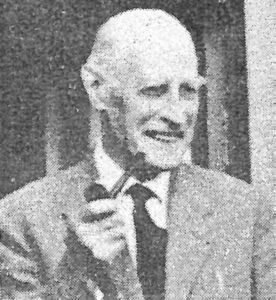 Peake was followed by Herbert Coghlan. He was trained as a mechanical engineer and worked at the North British Locomotive works as well as on railways in Ireland and Burma. He lived next door to Harold Peake and from him developed an interest in archaeology and metallurgy. He became an expert, with an international reputation, on prehistoric metal analysis and wrote many articles and standard works on the subject. He used many pieces in the Museum collection for this intrusive research which, in some instances, involved removing sizeable samples from the artefacts from prominent locations. He exchanged pieces with other museums to further his research.
Peake was followed by Herbert Coghlan. He was trained as a mechanical engineer and worked at the North British Locomotive works as well as on railways in Ireland and Burma. He lived next door to Harold Peake and from him developed an interest in archaeology and metallurgy. He became an expert, with an international reputation, on prehistoric metal analysis and wrote many articles and standard works on the subject. He used many pieces in the Museum collection for this intrusive research which, in some instances, involved removing sizeable samples from the artefacts from prominent locations. He exchanged pieces with other museums to further his research.
Herbert Coghlan reorganised the displays with the help of his wife and with minimal funding. Inevitably they were very academic. Of particular significance during this time is a report commissioned by Coghlan in 1951 from D. B. Harden, the Keeper of Antiquities at the Ashmolean Museum. This report recommended the removal of the ‘typical collection’ (i.e. the world collection timeline) to store, and that the Museum become orientated solely to local and district interests. It is unclear what general collecting took place at this time as documentation is limited but it is known that there was no further collecting of world collections. Collecting concentrated on local subjects: archaeology, natural science and local history but not on social history to any extent. During his period some collecting was restricted: for instance, he would only accept a portion of the finds from archaeological excavations.
Items acquired by Harold J E Peake and Herbert Coghlan help to illustrate the history of the Museum itself, for example, as told in ‘Our Story’ exhibition. They also demonstrate curatorial approaches during the first half of the 20th century, for example Peake’s use of the Haslemere Plan for museum display – ie Geology, Natural History & Human History – and Coghlan’s metallurgical experimentation on Bronze Age implements, in contrast to the currently proposed curatorial and interpretative approaches.
The Professional Era (1978 to date)
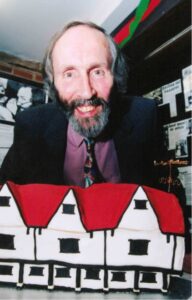 The first ‘professional’ Curator, Tony Higgott, soon identified the considerable gaps in the collections, particularly local and social history. There was therefore a strong focus on collecting. This was even more pressing as the Museum now had to formally serve the much wider area of the Newbury district. The task was not aided by the poor state of storage which included many collection items inaccessible in the attic, and documentation was poor or non-existent. There was no certainty about what might already be in the collection. The main perceived gaps were in local and social history collections and considerable efforts were made over the following 30 years to collect as widely as possible in this area, in addition to those traditional areas such as archaeology. The 1980s and 1990s were times of rapid change generally and much was available for the collections but it may be said that there was no overall strategy in collecting.
The first ‘professional’ Curator, Tony Higgott, soon identified the considerable gaps in the collections, particularly local and social history. There was therefore a strong focus on collecting. This was even more pressing as the Museum now had to formally serve the much wider area of the Newbury district. The task was not aided by the poor state of storage which included many collection items inaccessible in the attic, and documentation was poor or non-existent. There was no certainty about what might already be in the collection. The main perceived gaps were in local and social history collections and considerable efforts were made over the following 30 years to collect as widely as possible in this area, in addition to those traditional areas such as archaeology. The 1980s and 1990s were times of rapid change generally and much was available for the collections but it may be said that there was no overall strategy in collecting.
Collecting was likely to have been a mixture of reactive and proactive acquisition. However, it must be stressed that the temporary exhibition programme was strongly influenced by material collected. At one time in excess of 500-600 items were being added each year to the collections, covering subjects such as trades and industries, clocks and watches, costume, paintings, photographs, etc. The rise of rescue archaeology since the 1970s and developer funded archaeology since the 1990s has also seen a big increase in the deposit of archaeological material and the need to store bulk collections.
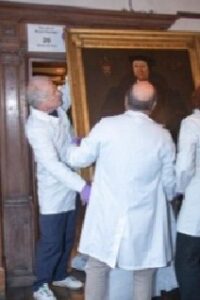 There had been a historical problem of identity for the Museum. Since 1998 it has been known as the West Berkshire Museum but collections built up previously certainly in the local and social history category had a Newbury bias. In 2010 the museum made a successful bid to the Heritage Lottery Fund to redevelop. The decant of all collections to off-site stores has provided an opportunity to audit all material previously held at the Museum, this inventory was migrated to a specialist collections management system. As part of the HLF bid an assessment was made of the collections, and a plan for review of the collections was made, so that the museum better understood the significance and strengths and weaknesses of the collection.
There had been a historical problem of identity for the Museum. Since 1998 it has been known as the West Berkshire Museum but collections built up previously certainly in the local and social history category had a Newbury bias. In 2010 the museum made a successful bid to the Heritage Lottery Fund to redevelop. The decant of all collections to off-site stores has provided an opportunity to audit all material previously held at the Museum, this inventory was migrated to a specialist collections management system. As part of the HLF bid an assessment was made of the collections, and a plan for review of the collections was made, so that the museum better understood the significance and strengths and weaknesses of the collection.
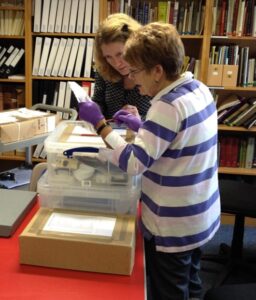 An Acquisition & Disposal Panel was established in June 2009 to consider items offered for acquisition (and the potential impact of doing so) and opportunities for collection development and rationalisation, including disposal. The A&D Panel has included volunteer representatives from May 2011. Decisions about potential acquisitions are now more robust and formalising a process have impacted on collecting over the past few years, as the collections can now be easily searched and retrieved for exhibition or other proposes.
An Acquisition & Disposal Panel was established in June 2009 to consider items offered for acquisition (and the potential impact of doing so) and opportunities for collection development and rationalisation, including disposal. The A&D Panel has included volunteer representatives from May 2011. Decisions about potential acquisitions are now more robust and formalising a process have impacted on collecting over the past few years, as the collections can now be easily searched and retrieved for exhibition or other proposes.
The above is an edited account taken from the Collections Development Policy 2018.
